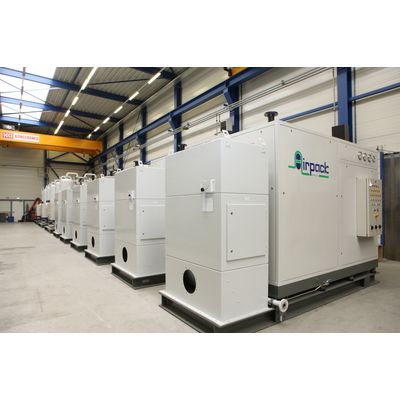

- Home
- Companies
- Airpack Nederland Bv
- Products
- Screw Compressors

Screw Compressors
We offer a complete range of oil-lubricated and oil-free air and gas compressors suitable for any application and environment. All our products can be customized to your specifications and requirements. We are free to choose any compressor brand upon your request or best suitability for the application. Airpack screw type compressor packages have a compact design making them very suitable to be used in tight spaces such as on a FPSO or offshore platform. They are available in a wide range of capacities, however, the pressures are limited to 11 bar(g) for the oil-free screw compressor and 13 bar(g) for oil-lubricated type depending on the ambient temperatures. The range of each compressor type can be found here. Do you need to go higher in capacity or pressure? Check out our reciprocating and centrifugal compressors or contact our sales team, they are ready to help you find your solution!
- Small footprint
- Available in oil-lubricated and oil-free
- All compressor brands are possible
That humankind has numerous technologies to condense air or gaseous molecules into ever smaller spaces is a marvel in and of itself. More amazing is that improvements in such instrumentation are ongoing, adding to efficiency, safety and profitability in many different industries. Building construction routinely employs air compression in riveting, jack-hammering, pneumatic pumping, sand-blasting and large-scale painting. It stands to reason that new technology that enhances capability and performance will help to strengthen quality and minimize cost overruns. Among the more recent developments in this field is the rotary-screw compressor. Among its assets is its capacity to process a larger volume of gas.
Like other compressor designs, the rotary compressor operates on the principle of positive displacement. In essence, this means that a volume of gas is trapped in a vessel or container, the space of which is reduced by one mechanism or another thereby boosting the pressure on the gaseous molecules just before they are ejected from the chamber. It is the mechanism that distinguishes each type of compressor. The screw type compressor employs two rotors that enmesh with one another to achieve compression. The rotors interlock because each is outfitted with lobes and flutes, the “female” rotor generally having more flutes into which the “male” lobes insert themselves.
As the rotary type compressor functions, the lobe rolls down its corresponding flute (or valley) which encases the gas. As this rotation continues, the gas is deprived of more and more space. When the lobe reaches the end of its groove, the gas is discharged at a considerably lower volume. In this manner, the industrial screw compressor effectively condenses air or other gas for efficient containment. This compression may or may not be lubricated with oil, which seals the chamber and can muffle noise.
The rotary screw air compressor possesses advantages given its distinctive design.
